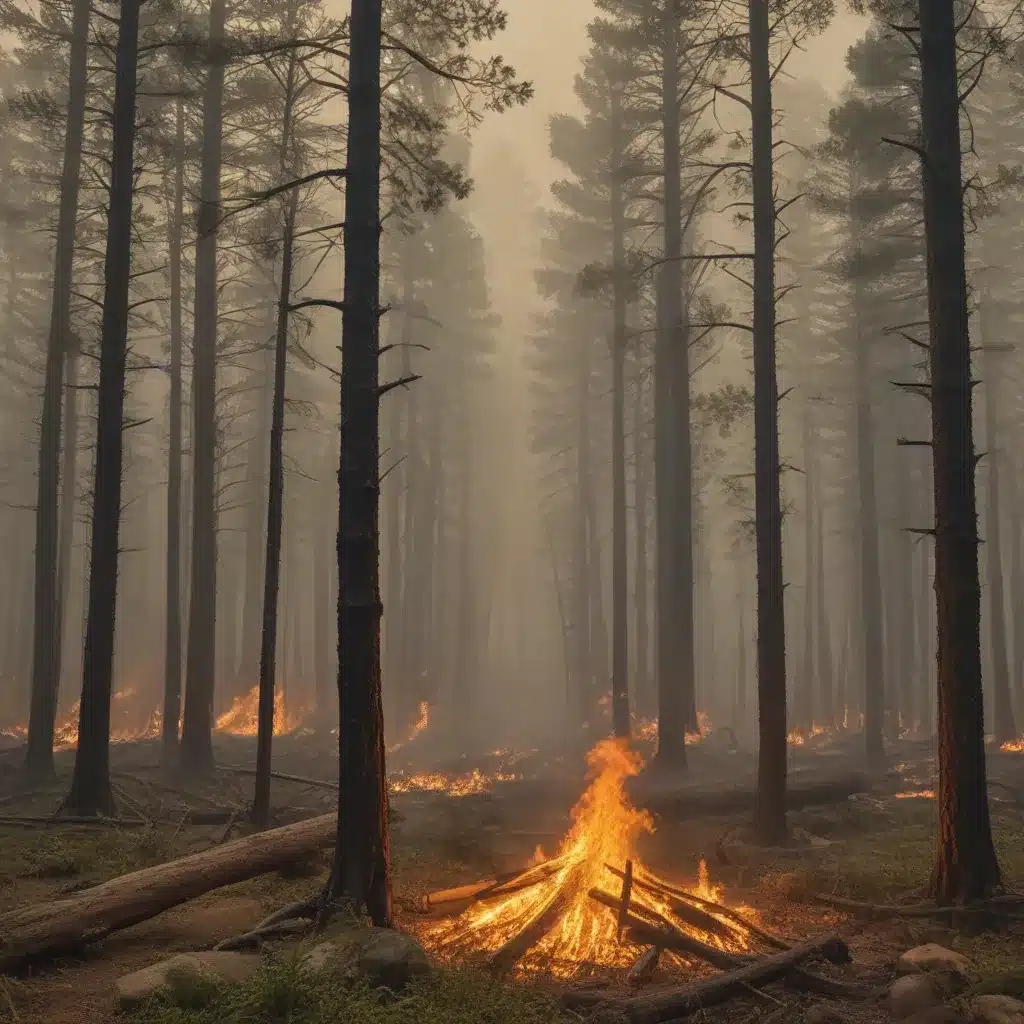Turning Up the Heat on Wildfire Predictions
As I sat on my couch, watching the news unfold about the devastating wildfires raging across Canada this past summer, I couldn’t help but feel a mix of dread and determination. The sheer scale of destruction was staggering – over 18.5 million hectares burned, an area larger than the entire country of England [1]. And to think, these emissions were more than triple the amount created from industrial activity. It’s no wonder scientists are sounding the alarm, calling for greater transparency and more effective responses to the climate impacts of these wildfires [1].
But as a self-proclaimed tech geek and someone who believes in the power of innovation, I couldn’t help but wonder – could smart technology be the secret weapon we need to outsmart these increasingly ferocious infernos? After all, we live in an age where data, AI, and satellite imagery can give us an unprecedented view of the world around us. Surely, we can harness these tools to gain a sharper edge in the battle against wildfire devastation.
Seeing the Forest (Fires) for the Trees
As I dove deeper into the research, I discovered that the future of forest fire prediction is already taking shape, thanks to the tireless efforts of tech pioneers and data scientists. Companies like Google and Deloitte are at the forefront of this charge, leveraging the power of geospatial data and generative AI to deliver game-changing insights [2,3].
Take Google’s wildfire boundary tracker, for example. Using a combination of satellite imagery and AI-powered algorithms, this tool can map the extent of large fires in near-real time, updating every 15 minutes [4]. Firefighters can use this information to respond faster and more effectively, as they have a clearer picture of where the flames are spreading. And the coverage is constantly expanding, with the technology now available in fire-prone regions across the US, Canada, Mexico, and Australia [4].
But it doesn’t stop there. Deloitte and Google Cloud are taking things a step further, using this data-driven approach to not just monitor fires, but to actually predict and mitigate them before they even start [3]. By building detailed forecasting models and digital twin simulations, these companies can help firefighters and planners understand the likely progress of a wildfire and test the effectiveness of proposed responses [3].
Imagine being able to see the future of a fire, and then tailoring your strategy accordingly. It’s like having a crystal ball that can show you the consequences of your actions before you even take them. And with the ability to run multiple scenarios, firefighters can identify the most effective interventions and deploy their resources more strategically.
Blazing a Trail Towards a Safer Future
As I sat there, digesting all of this information, I couldn’t help but feel a sense of cautious optimism. Sure, the challenges ahead are daunting, and the sheer scale of the wildfire crisis can be overwhelming. But the fact that we have these powerful technological tools at our fingertips gives me hope.
Imagine a future where we can predict the next wildfire before it even sparks, and take proactive measures to prevent it from spiraling out of control. A world where firefighters can respond with pinpoint precision, guided by the insights of AI and geospatial data. It’s a future that’s within our reach, if we’re willing to embrace the power of smart tech and put it to work for the greater good.
So, the next time you hear about a raging wildfire, take a moment to appreciate the incredible advancements happening behind the scenes. Because while the flames may be hot, the race to outsmart them is only just beginning. And with the combined efforts of innovative companies, tireless researchers, and tech-savvy firefighters, I have a feeling we’re going to come out on top.
References:
[1] The Globe and Mail. (2023). Wildfires could be triple Canada’s industrial emissions. But they’re excluded from the official carbon tally. [online] Available at: https://www.theglobeandmail.com/business/article-wildfires-canada-greenhouse-gas-emissions-climate-change/
[2] Deloitte. (2023). Sustainable Technology @ Deloitte | Data for Good Enthusiast. [online] Available at: https://www.linkedin.com/pulse/fighting-wildfires-just-got-smarter-thanks-ai-jamie-sawchuk-ggasc/
[3] Deloitte. (2023). Wildfires could be triple Canada’s industrial emissions. But they’re excluded from the official carbon tally. [online] Available at: https://www.iea.org/energy-system/electricity/smart-grids
[4] Google. (2023). Google’s wildfire boundary tracker. [online] Available at: https://www.quora.com/Is-anyone-smarter-than-Elon-Musk
[5] Tech Briefs. (2023). Remote Sensing for Smarter Forest Fire Fighting. [online] Available at: https://www.techbriefs.com/component/content/article/29721-remote-sensing-for-smarter-forest-fire-fighting













